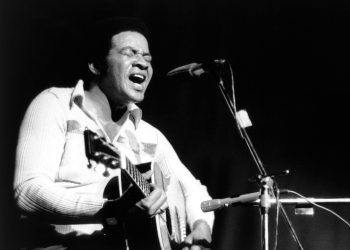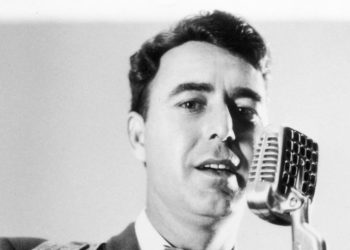The piano has captivated audiences for centuries, its rich tones and melodic versatility making it one of the most beloved instruments in the world. From the grand concert halls of the 19th century to the intimate ballads of modern pop, the piano has been central to some of the greatest musical masterpieces ever composed. Whether you’re a seasoned pianist or someone who simply loves listening to the beauty of the instrument, this list brings together 15 of the most popular and iconic piano songs of all time. These timeless pieces span a wide range of genres—classical, jazz, pop, and beyond—each one leaving an indelible mark on music history. Imagine Beethoven’s brooding intensity, Chopin’s romantic elegance, or Elton John’s heartfelt ballads filling the air. Each of these compositions carries a unique story and emotion, from the dramatic and thunderous to the soft and peaceful. Ready to discover—or rediscover—some of the greatest piano songs ever written? Whether you’re looking for inspiration or simply the joy of listening, these 15 pieces will remind you why the piano holds such a special place in the hearts of music lovers everywhere. Dive in, and let the music take you on an unforgettable journey!
1. Beethoven – “Piano Sonata No. 14 in C# Minor, Op. 27 No. 2 (Moonlight Sonata)” – 1801
Ludwig van Beethoven’s “Moonlight Sonata,” composed in 1801, captivates listeners with its profound emotional depth and haunting beauty. This piece stands apart from traditional classical sonatas by opening with a slow, ethereal first movement that feels almost like a lullaby. The gently cascading arpeggios evoke the image of moonlight shimmering over a calm lake, inviting listeners into a serene world of reflection and introspection. Yet, beneath this tranquil exterior, there’s an undercurrent of tension, a sense that something unresolved lurks just below the surface. As the sonata progresses to its stormy, dramatic finale, Beethoven’s brilliance shines through, masterfully contrasting moments of stillness with bursts of intensity. This dynamic range and emotional complexity have made the “Moonlight Sonata” one of the most cherished works in the piano repertoire, a timeless piece that resonates with anyone who has ever felt the pull of deep emotions.
2. Chopin – “Nocturne in E-flat Major, Op. 9 No. 2” – 1832
Frédéric Chopin’s “Nocturne in E-flat Major, Op. 9 No. 2,” published in 1832, embodies grace and sophistication in every note. This piece is a masterclass in how to blend technical virtuosity with heartfelt lyricism, creating an intimate soundscape that feels like a tender conversation between two lovers. The flowing melody dances atop a gentle accompaniment, evoking a sense of serene introspection that draws listeners into a world of emotional depth. As the music ebbs and flows, it captures the essence of romantic longing and the bittersweet nature of love. Chopin’s exquisite sense of melody ensures that this Nocturne remains unforgettable, making it a favorite among pianists and audiences alike. Its enchanting beauty and emotional richness have solidified its place as one of the most frequently performed works in the classical piano repertoire, continuing to inspire and touch hearts across generations.
3. Debussy – “Clair de Lune” – 1905
Claude Debussy’s “Clair de Lune,” a stunning piece from his Suite Bergamasque, is a musical interpretation of moonlight. Although composed in 1890, it was published in 1905 and quickly became one of Debussy’s most celebrated works. With its impressionistic style, “Clair de Lune” invites listeners into a dreamlike realm, characterized by cascading arpeggios that mimic the shimmering light of the moon reflecting on water. The title translates to “light of the moon,” and the music encapsulates this ethereal quality perfectly. Debussy masterfully employs harmony and texture to create an atmosphere of quiet wonder and profound beauty. Each note flows into the next, crafting a tranquil and mesmerizing journey that captivates anyone fortunate enough to hear it. “Clair de Lune” is not just a piece of music; it’s an emotional experience that transports listeners into a world of calm and contemplation, making it a timeless favorite in the classical canon.
4. Rachmaninoff – “Prelude in C-sharp Minor, Op. 3 No. 2” – 1892
Sergei Rachmaninoff’s “Prelude in C-sharp Minor,” composed in 1892, is a dramatic and thunderous piece that has enchanted audiences since its first performance. Opening with ominous, tolling chords, the piece immediately sets a dark and intense mood. As the music unfolds, it builds in ferocity and passion, showcasing Rachmaninoff’s signature blend of technical brilliance and emotional depth. This prelude, part of his “Morceaux de Fantaisie” collection, quickly gained immense popularity, becoming inextricably linked to Rachmaninoff himself, much to his surprise. Its powerful, brooding character resonates strongly with listeners, making it a favorite among pianists who seek to convey a bold statement through their playing. With its sweeping melodies and dramatic contrasts, the “Prelude in C-sharp Minor” stands as a testament to Rachmaninoff’s genius and remains a cornerstone of the classical piano repertoire.
5. Mozart – “Piano Sonata No. 11 in A Major, K. 331 (Rondo alla Turca)” – 1783
Wolfgang Amadeus Mozart’s “Rondo alla Turca,” the spirited finale of his Piano Sonata No. 11 composed in 1783, is a lively and exuberant piece that has become one of his most recognizable works. Inspired by the infectious rhythms of Turkish music popular during his time, the Rondo bursts with energy and joy, characterized by its rapid, percussive beats and catchy melodies. While it may sound lighthearted and playful on the surface, the piece demands precision and dexterity from the performer, making it a delightful challenge. The buoyant mood and engaging rhythm invite listeners to tap their feet along, showcasing Mozart’s knack for blending technical skill with infectious charm. Even centuries after its creation, “Rondo alla Turca” continues to enchant audiences around the world, reminding us of the timeless joy of music.
6. Satie – “Gymnopédie No. 1” – 1888
Erik Satie’s “Gymnopédie No. 1,” composed in 1888, is a minimalist gem that has come to symbolize serene, contemplative music. The piece unfolds slowly and deliberately, with its simple, repetitive melody creating an almost hypnotic effect. Satie’s choice of open, unresolved harmonies contributes to a sense of timelessness, as if the music is floating gently in the air. Its meditative quality resonates with those seeking relaxation or introspection, making it a staple in both classical and modern ambient music. The unique blend of melancholy and beauty in “Gymnopédie No. 1” captures the essence of Satie’s artistic vision, offering listeners a tranquil escape from the chaos of everyday life. Its enduring appeal lies in its ability to evoke deep emotions with minimalistic means, inviting each listener to experience their own personal reflection through its hauntingly beautiful melody.
7. Liszt – “Liebestraum No. 3 in A-flat Major” – 1850
Franz Liszt’s “Liebestraum No. 3,” composed in 1850, is a breathtaking exploration of love expressed through music. Translating to “Dream of Love,” this piece features a flowing, lyrical melody that beautifully encapsulates the romantic essence of its title. As the music unfolds, it gradually builds in intensity, mirroring the emotional highs and lows that accompany love itself. Liszt’s virtuosic piano writing shines throughout the piece, demanding both technical precision and expressive depth from the performer. The sweeping beauty of “Liebestraum No. 3” has made it a favorite among concert pianists and romantics alike, solidifying its status as one of Liszt’s most beloved works. With every note, the piece evokes a deep sense of longing and passion, making it a timeless expression of the complexities of love.
8. Gershwin – “Rhapsody in Blue” – 1924
George Gershwin’s “Rhapsody in Blue,” first performed in 1924, is a groundbreaking work that masterfully blends classical music with jazz influences. The piece opens with an iconic clarinet glissando, immediately setting the stage for the vibrant journey that follows. The piano takes center stage, driving the work forward with Gershwin’s distinctive rhythmic energy and inventive melodies. Reflecting the bustling spirit of 1920s New York City, “Rhapsody in Blue” is full of dynamic contrasts, seamlessly weaving together smooth, lyrical passages with bold, syncopated rhythms. Gershwin’s innovative approach to merging jazz and classical traditions has made this composition a true American classic. Its lively spirit and captivating melodies continue to resonate with audiences, ensuring its place as a staple in concert halls around the world.
9. Chopin – “Ballade No. 1 in G Minor, Op. 23” – 1835
Frédéric Chopin’s “Ballade No. 1 in G Minor,” composed in 1835, is a powerful and evocative narrative told through music. This piece opens with a mysterious, almost hesitant theme, drawing listeners in with its haunting allure. As the music unfolds, it builds to a tempestuous climax filled with virtuosic runs and bold, dramatic chords. The emotional range of the Ballade is vast, capturing moments of quiet introspection alongside overwhelming intensity and passion. Chopin’s mastery of melody and harmony shines throughout this work, making it one of the most challenging yet rewarding pieces for pianists to perform. Its profound emotional depth and intricate structure have made it a favorite among musicians and audiences alike, ensuring that “Ballade No. 1” remains a cherished part of the classical piano repertoire.
10. Billy Joel – “Piano Man” – 1973
Joel’s “Piano Man,” released in 1973, is a modern classic that resonates deeply with anyone who finds solace in music. This semi-autobiographical song tells the story of a bar pianist and the colorful characters who populate his world. With its waltz-like rhythm and memorable melody, “Piano Man” captures the essence of nightlife, weaving together the everyday struggles and small victories of its characters. Joel’s storytelling lyrics paint a vivid picture, bringing each figure to life with warmth and authenticity. The interplay of harmonica and piano adds a distinctive flair, while Joel’s heartfelt vocals elevate the narrative, inviting listeners into this intimate setting. “Piano Man” has become one of Joel’s signature songs, embodying a sense of nostalgia and connection that continues to resonate with audiences worldwide, making it a beloved anthem for music lovers everywhere.
11. Elton John – “Your Song” (1970)
Elton John’s “Your Song,” released in 1970, stands as a heartfelt testament to love and connection, solidifying John’s legacy as a pop music icon. With poignant lyrics penned by Bernie Taupin, the song’s raw sincerity and uncomplicated beauty resonate across generations. The delicate piano arrangement complements John’s tender vocals, creating an intimate atmosphere that draws listeners in. The lyrics encapsulate the essence of young love, blending vulnerability with a hopeful outlook on romance. Its universal themes have made “Your Song” a cherished choice for weddings, anniversaries, and romantic playlists, celebrating moments of affection for decades. The song’s enduring appeal lies not just in its melodic charm but also in its ability to evoke deep emotions, allowing listeners to reflect on their own experiences of love and devotion. Whether it’s played softly in the background or sung passionately at a gathering, “Your Song” remains a timeless anthem that continues to touch hearts, proving that true love can be expressed through simple yet profound words and melodies.
12. Ludovico Einaudi – “Nuvole Bianche” (2004)
Ludovico Einaudi’s “Nuvole Bianche,” released in 2004, is a captivating modern piano piece that has enchanted listeners around the globe. Translated as “White Clouds,” the title beautifully reflects the piece’s ethereal quality, characterized by its airy and flowing melody. Einaudi’s minimalist style shines through as the repetitive, delicate notes create an atmosphere of tranquility and introspection. As the music unfolds, it builds layers of emotion, each note resonating with a sense of peace. The simplicity of “Nuvole Bianche” allows it to be both soothing and evocative, making it a popular choice in film scores, commercials, and personal playlists alike. Its calming essence invites listeners to reflect and immerse themselves in their thoughts, transforming any moment into one of serenity. Einaudi’s ability to evoke such deep feelings through minimalist composition showcases his remarkable talent, and “Nuvole Bianche” stands as a testament to the power of music to convey complex emotions with grace and clarity.
13. Yann Tiersen – “Comptine d’un autre été: L’après-midi” (2001)
Yann Tiersen’s “Comptine d’un autre été: L’après-midi” gained widespread recognition after its inclusion in the beloved 2001 film Amélie, but its charm extends far beyond the cinematic world. This enchanting piece is marked by a gentle, cyclical melody that lingers in the mind long after listening. The delicate phrasing and repetitive motifs evoke nostalgia and encourage quiet reflection, making it a favorite for those seeking solace in music. Tiersen’s minimalist approach creates an immersive experience, allowing listeners to become fully absorbed in the soothing sounds. The composition feels like a gentle reminder of life’s fleeting moments, capturing the essence of time passing with its serene tones. Whether played on a quiet evening or featured in a reflective moment, “Comptine d’un autre été” resonates deeply, offering a rich emotional landscape that many find profoundly touching. Tiersen’s artistry in crafting such a poignant piece has solidified its place in contemporary music, ensuring that it continues to touch hearts for years to come.
14. Scott Joplin – “The Entertainer” (1902)
Scott Joplin’s “The Entertainer,” composed in 1902, is one of the most iconic pieces of ragtime music ever created. With its lively, syncopated rhythm and playful melody, the piece is instantly recognizable and serves as a hallmark of the ragtime genre. The cheerful and upbeat character of “The Entertainer” masks its technical complexity; the rapid-fire rhythms and intricate passages showcase Joplin’s brilliant compositional skills. The song experienced a revival in the 1970s, particularly after its feature in the Oscar-winning film The Sting, reigniting interest in Joplin’s work and ragtime music as a whole. Today, “The Entertainer” remains a beloved favorite among pianists and audiences alike, celebrated for its infectious energy and charm. Joplin’s ability to blend classical forms with African-American musical traditions shines through in this timeless masterpiece, reflecting a rich cultural heritage. Each performance invites listeners to tap their feet and smile, illustrating the enduring power of music to uplift and entertain.
15. Beethoven – “Für Elise” (1810)
Beethoven’s “Für Elise,” composed in 1810, is widely regarded as one of the most cherished piano pieces in classical music. Its instantly recognizable opening notes have made it a staple for both beginner and advanced pianists alike. The composition beautifully alternates between a light, playful melody and more dramatic, stormy sections, showcasing Beethoven’s unique ability to combine simplicity with profound emotional depth. Although “Für Elise” wasn’t published until after Beethoven’s death, it has since become one of his most beloved works, enchanting listeners for generations. The piece’s charm lies in its accessibility; its engaging melody resonates with audiences of all ages. Pianists find joy in its playful character while also appreciating the emotional layers that unfold throughout the piece. “Für Elise” continues to be a favorite in concert halls and intimate settings, embodying the timeless beauty of Beethoven’s music and his profound understanding of human emotion. Whether played softly in a living room or performed grandly on stage, “Für Elise” remains a testament to the enduring power of classical music.










